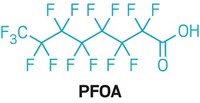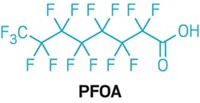Advertisement
Grab your lab coat. Let's get started
Welcome!
Welcome!
Create an account below to get 6 C&EN articles per month, receive newsletters and more - all free.
It seems this is your first time logging in online. Please enter the following information to continue.
As an ACS member you automatically get access to this site. All we need is few more details to create your reading experience.
Not you? Sign in with a different account.
Not you? Sign in with a different account.
ERROR 1
ERROR 1
ERROR 2
ERROR 2
ERROR 2
ERROR 2
ERROR 2
Password and Confirm password must match.
If you have an ACS member number, please enter it here so we can link this account to your membership. (optional)
ERROR 2
ACS values your privacy. By submitting your information, you are gaining access to C&EN and subscribing to our weekly newsletter. We use the information you provide to make your reading experience better, and we will never sell your data to third party members.
Persistent Pollutants
US EPA recommends testing wastewater for PFAS
Environmentalists call for mandatory limits on releases of “forever chemicals”
by Cheryl Hogue
December 1, 2020
| A version of this story appeared in
Volume 98, Issue 47

Some facilities may have to test for the presence of per- and polyfluoroalkyl substances (PFAS) in their wastewater, under a new strategy from the US Environmental Protection Agency.
The effort could eventually help reduce the level of environmentally persistent and toxic PFAS in drinking water drawn downstream of such facilities as well as in fish and river sediment.
But environmental advocates say the guidance amounts to little for people who have drinking water contaminated with PFAS.
“The EPA should be issuing tough, mandatory standards to regulate PFAS discharges from thousands of industry facilities,” Scott Faber, senior vice president for government affairs at the Environmental Working Group, says in a statement. Faber notes that PFAS are virtually ubiquitous in the blood of Americans. The EWG estimates that 2,500 US manufacturers likely discharge PFAS to rivers and lakes or to wastewater treatment plants, which aren’t designed to remove these chemicals.
The guidance, announced Nov. 30, affects only facilities governed by discharge permits that the EPA issues under the Clean Water Act. The agency is responsible for wastewater permits in the District of Columbia, Indian Country, Massachusetts, New Hampshire, New Mexico, and Puerto Rico as well as at some federal facilities.
Nonetheless, the new guidance potentially could become a national model for the 47 states authorized to issue wastewater permits within their borders.
The policy directs EPA regulators drafting wastewater permits to consider requiring facilities to monitor for PFAS if these chemicals are expected in discharges, the agency says. In addition to wastewater, this covers precipitation runoff from industrial sites or flow from municipal sewers that only carry stormwater.
Requirements for wastewater monitoring will only cover PFAS for which the EPA has validated analytical methods. The agency says these methods will become available as they are validated by multiple laboratories, which the EPA anticipates will happen in 2021.
The EPA says it is working with the US Department of Defense to develop those methods, with efforts focused on 40 PFAS widely detected in the environment.




Join the conversation
Contact the reporter
Submit a Letter to the Editor for publication
Engage with us on Twitter